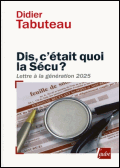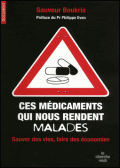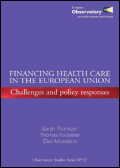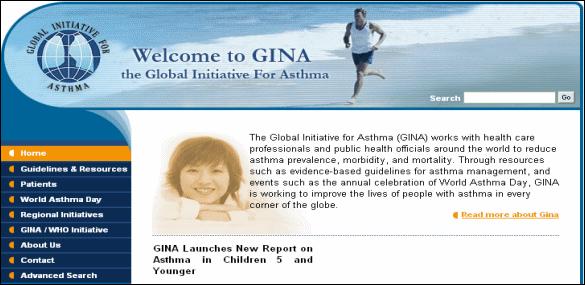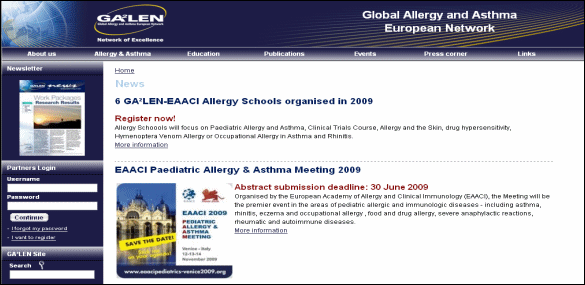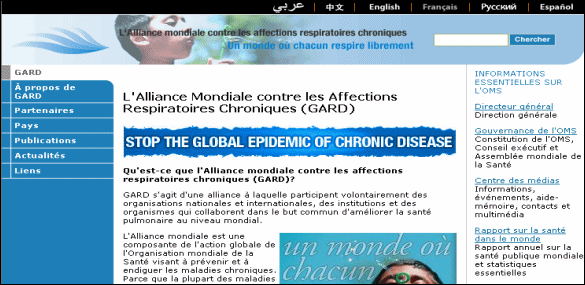LU POUR VOUS DE JUIN 2009 : livres du mois - sites du mois - working papers
Tous les lu pour vous
LES LIVRES DU MOIS
Le bouclier sanitaire : renforcement ou rupture du pacte de 1945 ?
Tabuteau D.
Paris : Les Presses de SciencesPo : Paris : Editions de santé : 2009 : 108 p.
L'augmentation du ticket modérateur, la multiplication des forfaits et franchises, le développement des dépassements d'honoraires remettent en cause, en France, les conditions de l'égal accès aux soins et à la prévention. Le reste à charge (RAC), selon l'expression consacrée par les rapports administratifs, est, de surcroît, très inégalement réparti. La question de la création d'un « bouclier sanitaire » permettant de réduire ce « reste à charge » s'est récemment introduite dans le débat politique. C'est pourquoi la chaire Santé de Sciences Po a souhaité organiser une journée d'étude sur ces questions. Ces travaux ont permis d'apprécier l'importance et les effets des dépenses de santé laissées à la charge des assurés sociaux, de s'interroger sur le régime des affections de longue durée et les conditions de prise en charge des soins les plus onéreux et, enfin, de débattre des formes que pourrait prendre un « bouclier sanitaire » et des interrogations que ce projet suscite.
La santé, un enjeu politique.
Bansahel H., Mezzadri A.M.
Paris : Editions de santé ; 2009
Que le mot "santé" soit prononcé, et notre pays se sent aussitôt investi d'un rôle de lumière de monde. Chacun se fait illico l'avocat d'un système - le nôtre - qui serait le meilleur possible. Mais est-ce toujours vrai ? Et si oui jusqu'à quand ? L'ambiguïté tient en premier lieu au fait que le mot "santé" se voit attribuer une multitude de sens contradictoires. Une seconde erreur consiste à assimiler la santé à la médecine. Cette confusion est pourtant dommageable à la bonne gestion de cet important secteur de notre activité socio-économique. Qui plus est, comment adapter un système en n'évoquant jamais les valeurs, notamment culturelles, qui le structurent ? La santé, c'est d'abord un enjeu politique et c'est pour ce motif qu'une approche différenciée y est indispensable (4e de couv).
Dis, c'était quoi la Sécu ? Lettre à la génération 2025.
Tabuteau D.
La Tour d'Aigues : Editions de l'Aube : 2009 : 77 p.
Nous sommes en 2025. Une session extraordinaire du Parlement a été convoquée pour débattre de l'avenir du système de santé. La dépense de santé représente plus de 14% du produit intérieur brut. Au rythme d'évolution des dépenses, la santé pourrait bientôt représenter 20% de la richesse nationale. On évoque parfois avec nostalgie le "trou de la sécu" qui défrayait la chronique à la fin du siècle dernier. Un trou d'épingle ! Les plus anciens se remémorent l'assurance maladie dont bénéficiaient leurs parents et grands-parents. Et s'interrogent : Mais comment en sommes-nous arrivés là ?
Ces médicaments qui nous rendent malades : sauver des vies, faire des économies.
Boukris S., Even P.
Paris : Le Cherche Midi : 2009 : 282 p.
Un médicament peut être un remède ou un poison. Prendre un médicament n'est pas un geste anodin. Les effets secondaires et indésirables des médicaments constituent un réel problème de santé. En France, on estime que le nombre de décès dus aux médicaments se situe entre 8 000 et 13 000 par an, soit deux à trois fois plus que les accidents de la route ! On compte plus de 130 000 hospitalisations chaque année imputables aux médicaments. La durée d'hospitalisation est d'environ 9 jours, ce qui signifie que les effets secondaires sont graves. Les médicaments constituent un immense marché mondial qui aiguise l'appétit des grandes multinationales. Les Français sont les plus grands consommateurs de médicaments en Europe. Plus la consommation est élevée et plus les risques d'accidents ou de décès augmentent. Depuis les affaires des statines, du Viox, de l'Acomplia et du Zyprexa, qui ont occasionné le retrait de plusieurs médicaments, on se pose des questions sur les objectifs des firmes pharmaceutiques, sur les moyens de contrôle et de régulation de cette puissante industrie, sur l'indépendance et la rigueur des « experts », sur l'information et la formation des médecins prescripteurs. Le médicament n'est pas une marchandise comme une autre, il touche à un besoin essentiel : la santé. Et la santé est notre préoccupation à tous.
La santé en Suisse : rapport national sur la santé 2008.
Meyer K.
Genève : Editions Médecine & Hygiène : 2009 : 324 p.
Le rapport «La santé en Suisse» décrit pour la première fois la santé de la population sous l'angle de ces déterminants sociaux de la santé. La Suisse est ainsi l'un des premiers pays d'Europe, après la Suède et la Finlande, à appliquer ce nouveau concept. Fait aussi partie de cette approche la conviction que la politique de la santé doit faire plus qu'assurer la prise en charge des personnes malades. Elle doit aussi contribuer à façonner le cadre social de telle sorte qu'autant de personnes que possible aient accès aux ressources du système de santé, ce qui nécessite également de réduire les inégalités en matière de santé. Une telle approche implique toutefois que le présent rapport sur la santé ne saurait se contenter d'être un recueil de données reflétant l'état de santé de la société. Il doit au contraire montrer comment santé et maladie se répartissent au sein des différents groupes socio-économiques – chez les hommes et les femmes séparément et en tenant compte de toute la vie, depuis l'enfance jusqu'à un âge avancé. Le rapport «La santé en Suisse» s'y efforce en dégageant l'influence sur la santé des déterminants que sont le statut, la formation, les ressources sociales, mais aussi l'environnement familial et social. Il souligne ainsi des corrélations susceptibles de permettre à tous les acteurs du système de santé d'élaborer des approches pour des améliorations futures de ce système.
Organizing and reorganizing : power and change in Health Care Organizations.
Organisation et réorganisation : puissance et changement dans l'organisation des soins.
McKee L., Ferlie E., Hyde P.
New York : Palgrave Macmillan : : 235 p.
Why are health care services in so many countries undergoing so much reorganization? What are the long term effects of such managerial restructuring? How might we start to make an assessment of such effects? This book brings together a group of international authors to examine these themes [...] The handling of organizational politics, power and change is revealed as a core aspect of effective reorganizations which are not a simple or linear process. They may also generate unpredictable effects.[...] [Contents] 1. Medicine and management in English primary care : a shifting balance ? - 2. Processes of change in the reconfiguration of hospital services: the role of stakeholder involvement - 3. Hospital sector organisational restructuring : evidence of its futility - 4. Decentralization as a means tor reorganize health-care in England : from theory to practice ? - 5. Va va voom, size doesn't matter: form and function in the NHS - 6. Evidence-based management : the power of evidence or evidence of power? - 7. "Speaking truth to power": on the discomfort of researching the contemporary process - 8. It's part of the job: healthcare restructuring and the health and safety of nursing aides - 9. Chasing chameleons, chimeras and caterpillars : evaluating an organizational innovation in the National Health Service - 10. Engaging the public voice in health care decision-making - 11. The swampy lowland: using hyperlinks to navigate the multiple realities of partnership - 12. Systems thinking for knowledge integration: new models for policy-ersearch collaboration - 13. Strategies of persuasion: the efforts of nurse practitioners in institutionalizing a new role - 14. Knowledge to action ? The implications for policy and practice of research on innovation processes - 15. Is the best defense a good offense ? Marketing of quality by US nursing homes - 16. Models of medical work control : a theory elaboration from English general practice.
Financing health care in the European Union: challenges and policy responses.
Financement du système de soins dans l'Union européenne : challenges et réponses politiques.
Thomson S., Foubister T., Mossialos E.
Copenhague : OMS - Bureau régional de l'Europe : 2009 : XVp.+181 p.
Health care systems across the European Union face a common challenge: the high cost of health care. Governments strive to ensure that cost pressures do not undermine values such as universal coverage and equitable financing and access. Focusing on the three health care financing functions - collection, pooling and purchasing - as well as on coverage, this book analyses the organization of health care financing in the Member States of the European Union, discusses the principal financing reform trends of recent years, and assesses their capacity to help ensure fiscal sustainability. The book includes a useful annex detailing the health care financing systems of each of the 27 Member States of the European Union. It will inform the deliberations of policy- and decision-makers, both within and beyond the European Union, faced with reconciling rising costs with equitable and sustainable health care.
LES SITES DU MOIS DE JUIN
Association Asthme et allergies
www.asthme-allergies.org
Presentation
L'Association Asthme & Allergies est une association à but non lucratif, dont les principaux objectifs sont d'informer et soutenir les patients asthmatiques, les parents d'enfants asthmatiques, ainsi que les médecins et les professionnels de santé. Elle propose en ligne des brochures d'information, des quizz, des vidéos, un numéro vert, un journal bimestriel « Asthme & Allergies Infos » des dossiers thématiques et des témoignages. Son site rend compte également de l'évènement annuel organisé par l'association « Les Etats généraux de l'asthme et de l'allergie » ainsi que des colloques centrés sur la thématique asthme et éducation. Son action auprès des professionnels se concentre notamment sur l'éducation thérapeutique. Dans ce cadre, elle a élaboré une charte des « écoles de l'asthme ».
EFA. European Federation of Allergy and Airway Diseases Patients Association
www.efanet.org
Presentation
L' EFA est un réseau européen fédérant des organisations de patients atteints d' allergies, d'asthme ou de broncho-pneumopathie chronique obstructive. Dans le cadre de ses activités, ce réseau publie des rapports du point de vue des patients, sur leur expérience de la maladie, afin de sensibiliser les décideurs, le grand public et les professionnels de santé aux problèmes auxquels ils sont confrontés. Il liste également les projets européens dont l'EFA est partenaire. Une rubrique d'information à destination des patients pour chaque pathologie concernée est disponible sur le site ainsi qu'une newsletter.
Global Initiative for Asthma (GINA)
www.ginasthma.com
Presentation
Le Global Initiative for Asthma (GINA) a été créé pour améliorer les connaissances sur l'asthme parmi les professionnels de la santé, les représentants de la santé et le grand public et pour améliorer la prévention et la prise en charge grâce à une concertation mondiale. Les buts du GINA sont de préparer des rapports scientifiques sur le traitement et la prévention de l'asthme, encourager la distribution et l'adoption de ces rapports, et assurer la promotion d'une collaboration internationale pour la recherche sur l'asthme. Son site met à la disposition de tous ses recommandations et rapport concernant la prise en charge, le contrôle et la prévention de l'asthme. Un espace dédié aux malades propose un service questions/réponses, un guide pratique pour les patients et leurs familles et une liste de liens utiles. Il présente également l'évènement annuel organisé par Gina, « le World Asthma Day », journée de sensibilisation à l'asthme.
GA2 LEN. Global Allergies and Asthma European Network
www.ga2len.net
Presentation
GA²LEN est un réseau européen qui rassemble des experts et centres de recherche en Europe dans le domaine des allergies et de l'asthme. Il a pour but de renforcer la recherche fondamentale sur tous les aspects de la maladie et de traduire rapidement ses résultats dans la pratique clinique en vue de réduire l'impact de l'allergie et de l'asthme Il mène des campagnes d'information dans le domaine de l'asthme à destination des médecins généralistes et des patients à travers des brochures disponibles sur leur site. Le réseau organise, des « Ecoles de l'Allergie » (Allergy schools), des sessions de formation et propose un programme de mobilité et d'échanges européens pour de jeunes chercheurs. En ligne sur le site : recommandations, comptes-rendus, bibliographie des publications du réseau et une newsletter.
GARD. L'Alliance Mondiale contre les Affections Respiratoires Chroniques
www.who.int/gard/fr/index
Presentation
GARD est une alliance à laquelle participent volontairement des organisations nationales et internationales, des institutions et des organismes qui collaborent dans le but commun d'améliorer la santé pulmonaire au niveau mondial. Son site présente les partenaires et pays participant à l'alliance. On y trouve également des publications, y compris des documents, des aide-mémoires, des bulletins, des articles, des vidéos et des résolutions liés à l'alliance globale et aux maladies respiratoires chroniques. Un agenda des principaux évènements et des liens utiles complètent le site.
VU DE L'ETRANGER : QUELQUES WORKING PAPERS ANALYSES
Assurance maladie
Financing Social Security: Simulating Different Welfare State Systems for Germany. 

Financement de la Sécurité sociale : simulation de différents systèmes de protection sociale en Allemagne.
Dieckhoener C., Peichl A.
Bonn : The Institute for the Study of Labor : 2009/04 : 77 p.
In Germany, there is an ongoing debate about how to increase the efficiency of the social security system and especially its financing. The aim of this paper is to simulate different financing systems for Germany. The introduction of a Liberal British or the Southern Greek financing system increases inequality and poverty, as well as labour supply incentives. The introduction of the Social-democratic Danish financing system decreases inequality of incomes, but does not necessarily lead to less poverty. Tax payments are extremely high, whereas social contribution payments are relatively low leading to mixed incentives effects.
Dépenses de santé
Modelling health care expenditures. Overview of the literature and evidence from a panel time series model. 

Une modélisation des dépenses de santé. Vue globale de la littérature et données issues d'un modèle d'un panel de séries temporelles.
Van Elk R., Mot E., Franses P.H.
La Hague : CPB : 2009/02 : 37 p.
Health care expenditures in industrial countries have been growing rapidly over the past forty years. This rapid growth jeopardizes the sustainability of public budgets and causes an increasing interest in the determinants of health care expenditures. The first purpose of this paper is to give an up to date overview of the literature on health care expenditures. Secondly, this paper tries to contribute to the existing literature by investigating the impact of several factors on health care expenditures in an empirical analysis using an error-correction model. Additional to the ‘usual suspects' for rising health care expenditures, we pay attention to a somewhat neglected driving factor, which is the increase in the relative price of health care compared to other goods and services. We find that the increasing price of health care helps to explain the increase in real health care expenditures. However, the use of health care in volume terms is negatively affected by the increasing price. This effect seems to be stronger in periods of cost containment policy. Consistent with most recent findings in the literature, we find that income and ageing are important drivers of health care expenditures.
Hôpital, alternatives à l'hospitalisation
Determinants of waiting time management for health services - Final synthesis report. 

Les déterminants de la gestion des listes d'attentes des services de santé. Rapport de synthèse final.
Pomey M.P., Forest P.G., Sanmartin C., Decoster A., Drew M.
Montréal : GRIS : 2009/02 : 127 p.
The purpose of this project is to synthesize the existing intelligence regarding the management of waiting times for specialized and diagnostic services in an effort to identify the key local and contextual factors of successful waiting time management. This procedure was performed by means of a systematic review of literature that focused on the success and failure factors of wait time management (WTM) for scheduled care and through interviews with key policymakers and decision-makers involved in the management of waiting times in Canada. The information thus gathered was then synthesized according to a predetermined conceptual framework in order to identify local and contextual factors associated with the management of waiting times.
Home Care in Canada: From the Margins to the Mainstream. 

Les soins à domicile au Canada : de l'exclusion à l'intégration.
Canadian Healthcare Association. (C.H.A.). Ottawa.
Ottawa : Canadian Healthcare Association : 2009 : 150 p.
Home care is moving from the margins to the mainstream of our health system. Given Canada's evolving demographics, social realities and changing care patterns, home care will assume greater importance. This is the new landscape for policy-makers. With this brief, the Canadian Healthcare Association, whose members span the country and the health continuum, urges governments to give the home care sector and its caregivers the long-overdue policy recognition they deserve.
Measuring Equity of Care in Hospital Settings: From Concepts to Indicators. 

Mesurer l'équité des soins hospitaliers : des concepts aux indicateurs.
Centre for Research on Inner City Health. (C.R.I.C.H.). Toronto
Toronto : C.R.I.C.H. : 2009/05 : 39 p.
Measuring equity in hospitals is a relatively new practice in Canada. Knowledge of the health indicators that matter most for equity in hospitals, and how to best measure and take action relative to these indicators, is only just developing. The Centre for Research on Inner City Health (CRICH) partnered with the TC-LHIN Hospital Collaborative on Marginalized Populations to complete a review of scholarly and grey literature concerning existing approaches for measuring and operationalizing equity of care in the hospital setting. This report presents the findings of our review. First, we provide background information on equity and its relationship to the hospital setting. We then review our methods, describing how the literature was collected and analyzed. This is followed by a presentation of results describing a set of indicators, both for general use and for current TC-LHIN priority populations. These indicators were chosen based on criteria that will be discussed in detail below, and represent a starting point for Toronto hospitals to begin measuring equity. We conclude by providing recommendations for the identification and monitoring of health inequalities in hospitals within the TC-LHIN. Ultimately, while measuring an inequality in itself does not lead to change, it is a crucial step in informing change. This study builds on the history and cumulative experience of work conducted on the development and use of hospital-based indicators. It also brings a systematic approach to the selection of equity indicators that may best fit the current needs and priorities of hospitals within the TC-LHIN, and that may be utilized immediately.
Inégalités de santé
Tackling Health Inequalities: 10 Years On – A review of developments in tackling health inequalities in England over the last 10 years. 

S'attaquer aux inégalités de santé : 10 ans. Une revue des développement en matière de lutte contre les inégalités de santé en Europe au cours de ces dix dernières annés.
Marmot M.
Londres : Department of Health : 2009 : 140 p.
This report reviews developments in health inequalities over the last 10 years across government - from the publication of the Acheson report on health inequalities in November 1998 to the announcement of the post-2010 strategic review of health inequalities in November 2008. It covers developments across government on the wider social determinants of health, and the role of the NHS. It provides an assessment of developments against the Acheson report, reviews a range of key data sets covering social, economic, health and environmental indicators, and considers lessons learned and challenges for the future.
Health and Income: a Robust Comparison of Canada and the US. 

Etat de santé et revenu : une comparaison solide entre le Canada et les Etats-Unis.
Duclos J.Y., Echevin D.
Laval : CIRPEE : 2009 : 18 p.
This paper uses sequential stochastic dominance procedures to compare the joint distribution of health and income across space and time. It is the first application of which we are aware of methods to compare multidimensional distributions of income and health using procedures that are robust to aggregation techniques. The paper's approach is more general than comparisons of health gradients and does not require the estimation of health equivalent incomes. We illustrate the approach by contrasting Canada and the US using comparable data. Canada dominates the US over the lower bi-dimensional welfare distribution of health and income, though not generally in terms of the uni-dimensional distribution of health or income. The paper also finds that welfare for both Canadians and Americans has not unambiguously improved during the last decade over the joint distribution of income and health, in spite of the fact that the unidimensional distributions of income have clearly improved during that period.
Healthy life years in the European Union : facts and figures 2005. 

Espérance de vie en bonne santé dans l'Union européennes : faits et chiffres 2005.
Robine J.M., Jagger C., Van Oyen H. et al.
Luxembourg : Office des publications officielles des Communautés européenne. : 2008 : 242 p.
This report is published by the European Commission in 2008 giving a first broad analysis of the situation of life expectancy and healthy life years all EU Member States except Bulgaria and Romania, who were not EU members at the time when the relevant data was collected in 2005.
The quality of medical care, behavioral risk factors and longevity growth. 

La qualité des soins, les facteurs de risque comportementaux et la croissance de la longévité.
Lichtenberg F.R.
Cambridge : NBER : 2009/06 : 42 p.
The rate of increase of longevity has varied considerably across U.S. states since 1991. This paper examines the effect of the quality of medical care, behavioral risk factors (obesity, smoking, and AIDS incidence), and other variables (education, income, and health insurance coverage) on life expectancy and medical expenditure using longitudinal state-level data. We examine the effects of three different measures of the quality of medical care. The first is the average quality of diagnostic imaging procedures, defined as the fraction of procedures that are advanced procedures. The second is the average quality of practicing physicians, defined as the fraction of physicians that were trained at top-ranked medical schools. The third is the mean vintage (FDA approval year) of outpatient and inpatient prescription drugs. Life expectancy increased more rapidly in states where (1) the fraction of Medicare diagnostic imaging procedures that were advanced procedures increased more rapidly; (2) the vintage of self- and provider-administered drugs increased more rapidly; and (3) the quality of medical schools previously attended by physicians increased more rapidly. States with larger increases in the quality of diagnostic procedures, drugs, and physicians did not have larger increases in per capita medical expenditure.
Médicaments
Endogenous Cost-Effectiveness Analysis in Health Care Technology Adoption. 

Analyse coût-efficacité endogène dans l'adoption de l'innovation médicale.
Jena A., Philipson T.J.
Cambridge : NBER : 2009/06 : 26 p.
As health care costs continue to rise, governments and private payers are being forced to make difficult coverage decisions about new health care treatments. Cost-effectiveness (CE) analysis is the main method used to prioritize this spending. The self-evident efficiency rationale for CE is that resources should be spent where they have the highest health impact. This has led to perhaps the largest field in health economics which attempts to provide better estimates of value through CE analysis. However, the costs invariably used in CE analysis are prices set by producers rather than resources used to produce treatments. Therefore, observed CE levels are endogenous because the pricing of new technologies is chosen to maximize profits. This is important because optimal prices, and hence observed CE levels, are affected by demand factors such as patient/doctor demand and payer adoption policies. This implies that traditional measures of “costs” reflect these demand-determined mark-ups rather than resource costs and moreover, CE-based reimbursement policies affect the endogenous CE levels payers observe. Reimbursement based on endogenous CE may therefore bear little relationship with efficient use of scarce medical resources. Using data from technology appraisals by the National Institute for Health and Clinical Excellence (NICE), we test for conditions under which adoption based on standard CE analysis may lead to adoption of more inefficient technologies in terms of resource use.
Soins de santé primaires
Birds of a Feather Flock Together: A Study of Doctor-Patient Matching. 

Qui se ressemble s'assemble : étude du duo médecin-patient.
Godager G.
Oslo : HERO : 2009 : 24 p.
In this paper we study individuals' choice of general practitioners (GPs) utilizing revealed preferences data from the introduction of a regular general practitioner scheme in Norway. Having information on relevant travel distances, we compute decision makers' travel costs associated with different modes of travel. Choice probabilities are estimated by means of nested logit regression on a representative sample of Oslo inhabitants. The results support the general hypothesis that patients prefer doctors who resemble themselves on observable characteristics: Individuals prefer GPs having the same gender and similar age. Specialist status of GPs was found to have a smaller effect on choice probabilities than other attributes such as matching gender. When travel costs are calculated by means of taxi prices, the estimated willingness to pay for specialist status of a GP amounts to € 0.89 per consultation, whereas the estimated willingness to pay for having a GP with the same gender amounts to respectively € 1.71 and € 3.55 for female and male decision makers, respectively.
Travail et santé
Health Effects of Occupational Change. 

L'influence des changements survenant dans l'histoire professionnelle des individus sur leur état de santé.
Lazareva O.
Moscou : CEFIR : 2009 : 34 p.,
Rapidly changing technologies and the growing openness of economies to international trade sometimes make entire occupations in the countries affected redundant. People employed in these occupations have to switch to other occupations that they do not necessarily like. Such “forced” occupational change causes stress, which can be harmful to their health. The effect of people losing their profession on their health has not been previously studied. This paper is intended to fill the gap. I study the effect of occupational change on health and health-related behavior using data from Russia's economic transition, which was characterized by massive occupational mobility. The results show that “forced” occupational change has a significant negative effect on individual health; it also increases smoking and alcohol consumption. These results survive a number of robustness checks.
Dynamics of Poor Health and Non-Employment. 

Les dynamiques d'un mauvais état de santé et du chômage.
Haan P., Myck M.
Bonn : The Institute for the Study of Labor : 2009/04 : 24 p.
While there is little doubt that the probability of poor health increases with age, and that less healthy people face a more difficult situation on the labour market, the precise relationship between facing the risks of health deterioration and labour market instability is not well understood. Using twelve years of data from the German Socio-Economic Panel we study the nature of the relationship between poor health and non-employment on a sample of German men aged 30-59. We propose to model poor health and non-employment as interrelated risks determined within a dynamic structure conditional on a set of individual characteristics. Applying dynamic panel estimation we identify the mechanism through which poor health contributes to the probability of being jobless and vice versa. We find an important role of unobserved heterogeneity and evidence for correlation in the unobservable characteristics determining the two processes. The results also show strong persistence in the dynamics of poor health and non-employment.
Vieillissement
Moving Toward Health Service Integration: Provincial Progress in System Change for Seniors. 

Vers l'intégration des services de santé : processus mis en place dans les provinces canadiennes pour les soins aux seniors.
Canadian Policy Research Networks. (C.P.R.N.). Ottawa.
Ottawa : Canadian Policy Reseach Networks : 2009/05 : 41 p.
Les responsables des politiques et les fournisseurs de soins de santé au Canada consacrent beaucoup de temps à l'examen de deux questions interdépendantes : la qualité des soins dispensés aux personnes âgées qui souffrent de conditions chroniques et la viabilité à long terme du système de soins de santé financés par des fonds publics au Canada. Ces deux enjeux sont liés parce que les personnes affligées de conditions chroniques sont les utilisateurs les plus fréquents des services de soins de santé, de sorte qu'une utilisation inefficace des ressources en matière de traitement des conditions chroniques contribue à un niveau plus élevé des dépenses en soins de santé. Les aînés, c'est-à-dire, les personnes de plus de 65 ans, sont beaucoup plus susceptibles d'être affligés de conditions chroniques que ce n'est le cas des personnes de moins de 65 ans. L'auteur de ce rapport analyse la notion conceptuelle qui est sous-jacente à l'intégration des soins aux aînés, examine des modèles de soins économiquement efficaces, détermine leurs caractéristiques et évalue ensuite la mesure dans laquelle les provinces canadiennes mettent en application ces caractéristiques.


